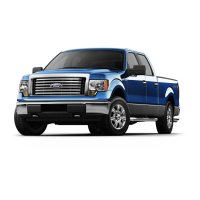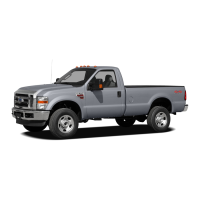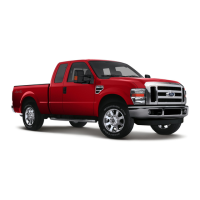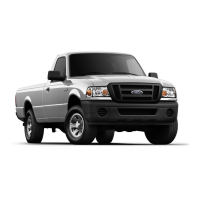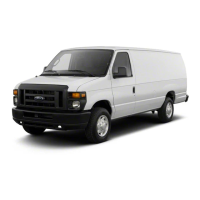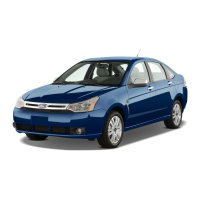
 Loading...
Loading...
Do you have a question about the Ford 2010 Focus and is the answer not in the manual?
| Brand | Ford |
|---|---|
| Model | 2010 Focus |
| Category | Automobile |
| Language | English |
Explains vehicle warning lights and chimes, their meanings, and required actions.
Describes the vehicle's gauges, including speedometer and engine coolant temperature.
Details the function of the odometer for registering vehicle mileage and trip distances.
Explains the message center's role in monitoring vehicle systems and providing alerts.
Introduces the vehicle's audio systems, including notes on volume and accessory delay.
Provides instructions on how to set the vehicle's clock.
Describes the controls for the manual heating and air conditioning system.
Explains the operation of headlamp controls, including parking and low beam lights.
Details how to operate the fog lamp control if equipped.
Explains how to activate and deactivate the high beam headlamps.
Describes the functions of the multi-function control lever for wipers and washers.
Provides instructions on how to adjust the steering wheel for tilt and reach.
Explains how the electronic compass is displayed and factors affecting its accuracy.
Covers the operation and types of keys for the vehicle.
Explains the function of power door lock controls.
Details the smart lock feature to prevent locking oneself out.
Describes the passive anti-theft system and its operation.
Covers general seating precautions and adjustment of head restraints.
Introduces the Personal Safety System and how it works.
Explains the airbag system, its components, and important precautions.
Provides directions on properly using safety restraints for children.
Offers recommendations for child safety restraints based on size, height, and weight.
Details methods for attaching child safety restraints using LATCH and seat belts.
Covers the use and installation of safety seats for infants and toddlers.
Guides on installing child seats using vehicle lap and shoulder belts.
Explains how to use LATCH system anchors for child seat installation.
Details how to attach child safety seats using tether straps.
Explains uniform tire quality grades like treadwear, traction, and temperature.
Basic information about tire maintenance for optimal service.
Defines key tire terminology such as load index and inflation pressure.
Details tire size, load index, and speed rating for P-type tires.
Explains the TPMS, its function, and malfunction indicators.
Covers the ignition positions and procedures for starting the vehicle.
Details the AdvanceTrac system, its features, and warnings.
Provides tips to prevent damage to the power steering system.
Explains how to switch off the Traction Control system and its implications.
Describes the gearshift positions and the adaptive transmission shift strategy.
Explains the Park gear position for the automatic transmission.
Explains the Reverse gear position and its operation.
Explains the Neutral gear position and its operation.
Describes the Drive with Overdrive gear position for fuel economy.
Outlines Ford's complimentary roadside assistance program and its services.
Explains how to operate the hazard flasher control and its purpose.
Describes the function and reset procedure for the fuel pump shut-off switch.
Explains the role of fuses and relays in the vehicle's electrical system.
Provides a chart of standard fuse amperage ratings and their corresponding colors.
Guides on how to change a flat tire, including precautions and spare tire use.
Provides a step-by-step guide for changing a vehicle tire.
Explains the procedure and safety precautions for jump-starting a vehicle.
Outlines how to obtain warranty service and find authorized dealers.
Provides resources for finding service when away from home.
Steps to take if customer concerns are unresolved with the dealer.
Explains the CAMVAP program for resolving disputes in Canada.
Provides guidelines for washing the vehicle's exterior, including materials and precautions.
Details the waxing process and recommended products for vehicle protection.
Explains how to repair paint chips and the necessary preparation.
Provides instructions for cleaning aluminum wheels and wheel covers.
Covers cleaning procedures for windshield, windows, and wiper blades.
Details how to clean the instrument panel, interior trim, and cluster lens.
Guides on recommended service intervals and using authorized dealers for repairs.
Lists safety precautions to follow when inspecting or servicing the vehicle.
Identifies key components located within the vehicle's engine compartment.
Explains how to check, add, and use windshield washer fluid, including warnings.
Provides instructions on how to replace the vehicle's wiper blades.
Covers checking and adding engine oil, including level indicators and capacity.
Details battery maintenance, checking terminals, and safety precautions.
Explains how to check and maintain engine coolant levels and concentration.
Provides instructions for adding engine coolant, including mixture and safety warnings.
Explains the fail-safe cooling system and how it works during overheating.
Information on the lifetime fuel filter and its maintenance.
Covers essential safety precautions and guidelines for handling automotive fuels.
Advises on selecting the correct fuel type and ethanol blend for the vehicle.
Details the recommended octane rating for gasoline and areas with lower octane availability.
Discusses measuring fuel economy, filling the tank, and factors affecting it.
Explains EPA fuel economy estimates and how they compare to actual usage.
Covers emission control components and how to maintain them for proper function.
Explains the OBD-II system, its role in monitoring emissions, and malfunction indicators.
Details I/M testing requirements and how to determine if the vehicle is ready.
Covers checking and adding power steering fluid, including level checks and capacity.
Explains the brake and clutch fluid reservoir and level checks.
Details checking automatic transmission fluid and its level.
Guides on checking and adding manual transmission fluid.
Covers changing the air filter element and its importance.
Provides specifications for the vehicle's engine, including octane and gap.
Explains how to identify the vehicle using the Safety Compliance Certification Label.
Details the components and information contained within the Vehicle Identification Number (VIN).
Explains how to find and interpret transmission codes on the certification label.
Introduces the availability of genuine Ford accessories and their warranty.
Lists various exterior accessories available for the vehicle.
Lists various interior accessories available for the vehicle.
Lists lifestyle accessories like ash cups and cargo management.
Lists accessories related to peace of mind, such as keyless entry and security systems.
Introduces Ford ESP plans, their coverage levels, and benefits.
Explains how Ford ESP can save money on maintenance and repairs.

